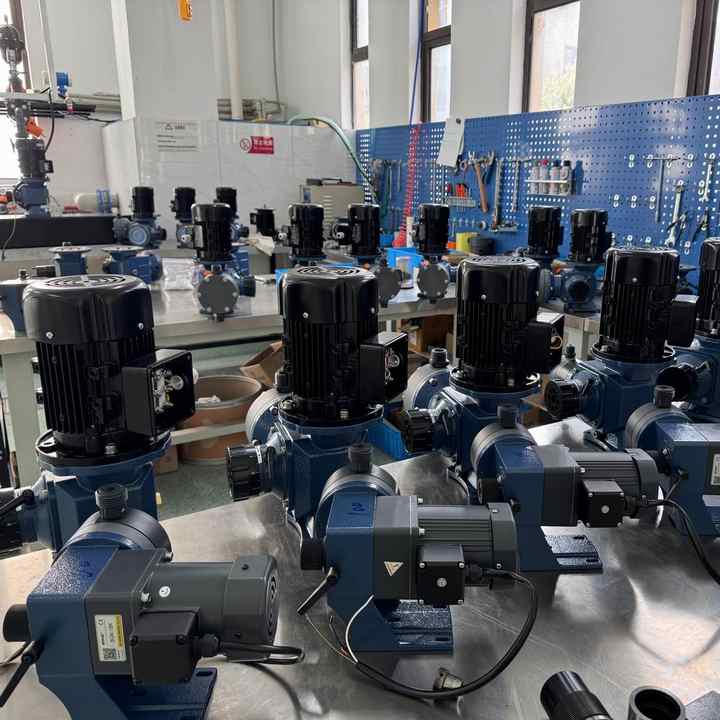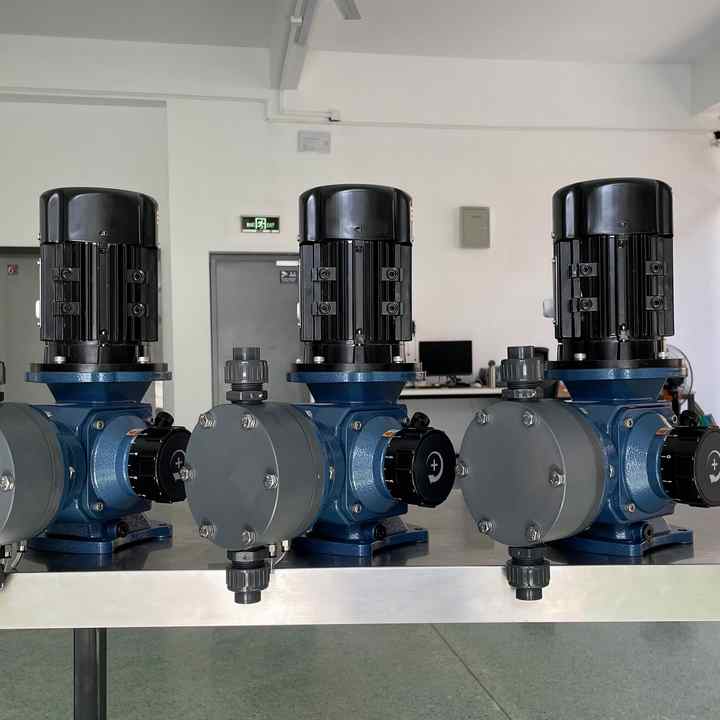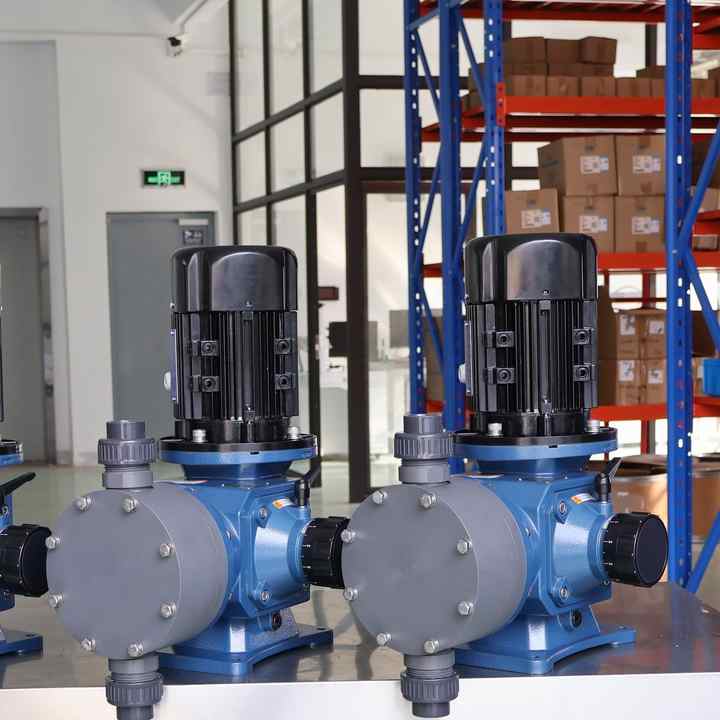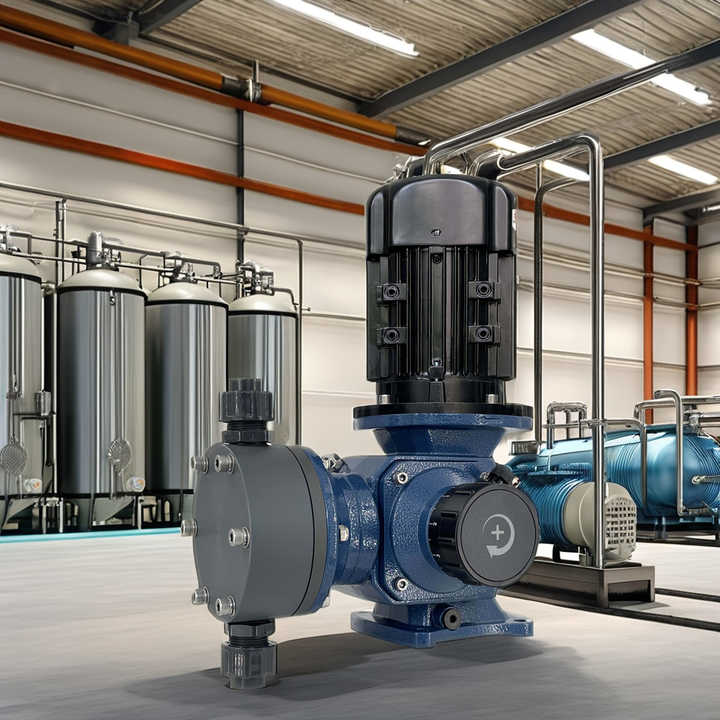Understanding Dosaki Dosing Pumps and Chemical Dosing Pumps
Dosing pumps are compact, versatile machines used in various industrial sectors, particularly where chemical handling and treatment are required. These pumps are commonly referred to as chemical dosing pumps due to their ability to dose and regulate the flow of chemicals precisely according to user needs.
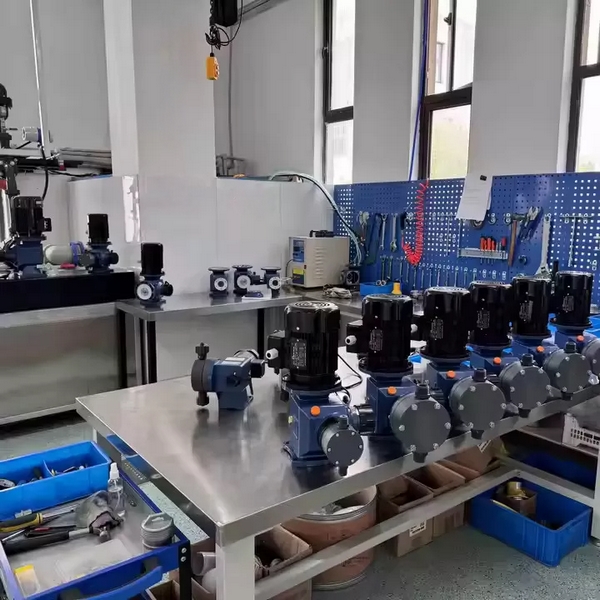
What is a Dosing Pump?
A dosing pump is a type of pump designed to regulate and adjust the flow rate of liquids, either automatically or manually. These pumps are primarily used to handle corrosive and hazardous chemicals, which is why they are often called chemical dosing pumps.
What is a Chemical Dosing Pump?
As mentioned earlier, a chemical dosing pump is a specific type of dosing pump used to handle various chemicals. The materials used in these pumps—such as PP, PVC, or PVDF plastics, and Teflon diaphragms—are resistant to chemical corrosion, making them ideal for hazardous and corrosive chemicals.
Construction of Dosing Pumps and Chemical Dosing Pumps
The design of dosing pumps, including chemical dosing pumps, is generally compact with low flow rates. This design is ideal for pumping hazardous chemicals in smaller quantities, which can be harmful if handled in large amounts. The structure of these pumps includes:
- Pump body/chamber
- Diaphragm/piston/magnetic components
- Inlet and outlet ports
- Safety valves to protect the pump
The materials typically used for chemical dosing pumps include high corrosion-resistant plastics and Teflon diaphragms.
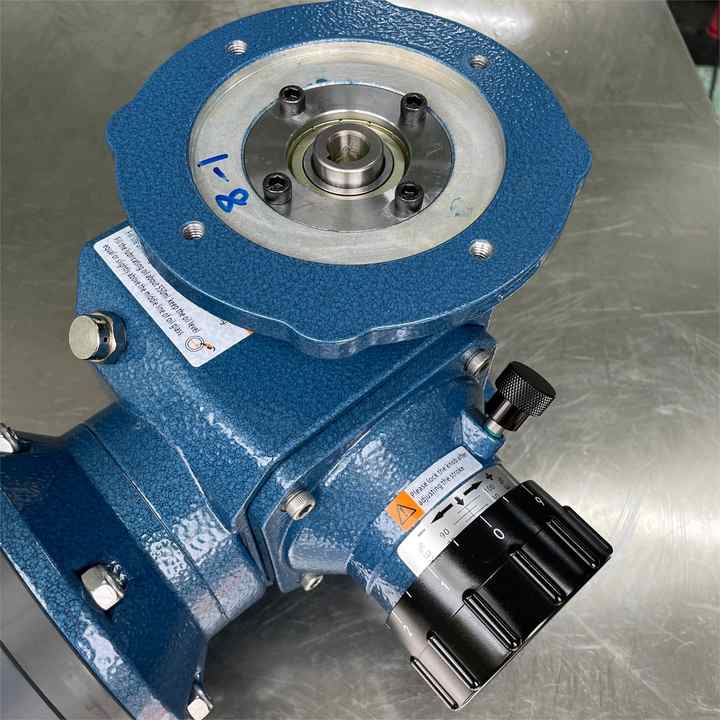
Operating Principle of Dosing Pumps
Dosing pumps operate on a simple principle, similar to diaphragm pumps. However, dosing pumps use electrical energy to drive the motor, unlike diaphragm pumps that rely on compressed air. This means dosing pumps can run continuously for longer periods, providing higher efficiency.
During operation, the reciprocating motion of the piston or diaphragm creates a pressure differential, which draws the fluid into the suction chamber and expels it out according to the user’s requirements. Simultaneously, this movement helps dose the correct amount of fluid to meet the user’s needs.
Types of Dosing Pumps and Chemical Dosing Pumps
There are several ways to categorize dosing pumps, each with different characteristics and applications:
- By Motor Type:
- Diaphragm Dosing Pumps
- Electromagnetic Dosing Pumps
- Piston Dosing Pumps
- Hydraulic Dosing Pumps
- By Control Mode:
- Automatic Control Dosing Pumps
- Manual Control Dosing Pumps
Each of these categories serves a unique purpose depending on the specific dosing requirements, and customers should carefully choose the one that best meets their needs.
Chemical Dosing Pump Types Based on Control Mode
Chemical dosing pumps can also be classified by control mode:
- Automatic Control Dosing Pumps: These pumps automatically regulate flow based on system parameters.
- Manual Control Dosing Pumps: These pumps require the user to manually adjust the flow rate.
Additional Classifications of Dosing Pumps
Dosing pumps can also be classified based on their power phase:
- Single-phase Dosing Pumps
- Three-phase Dosing Pumps
When choosing a dosing pump, it is crucial to consider the specific needs of the application to ensure the most efficient and effective pump selection.
For further information or assistance, feel free to contact Dosaki’s customer service team!




